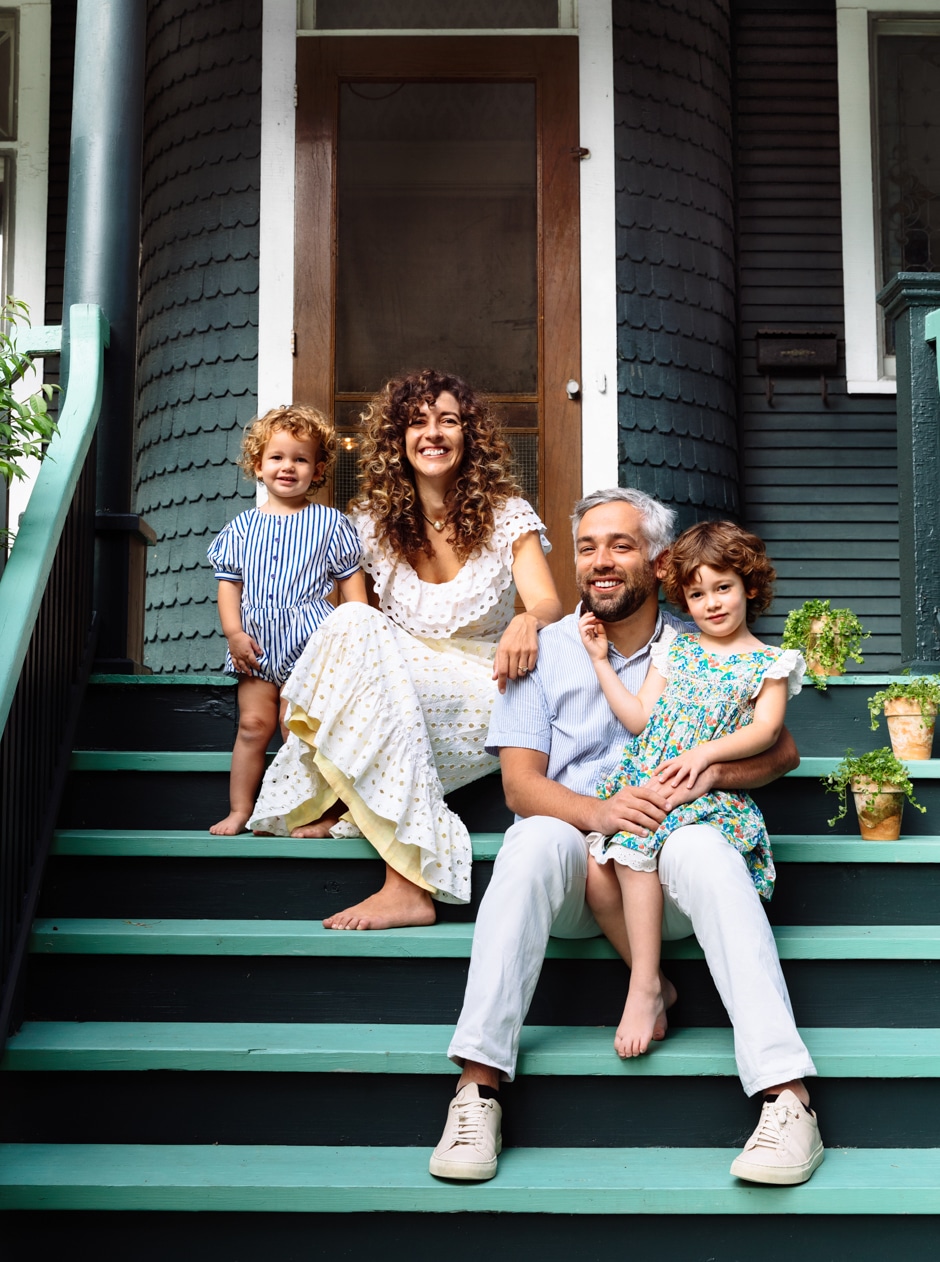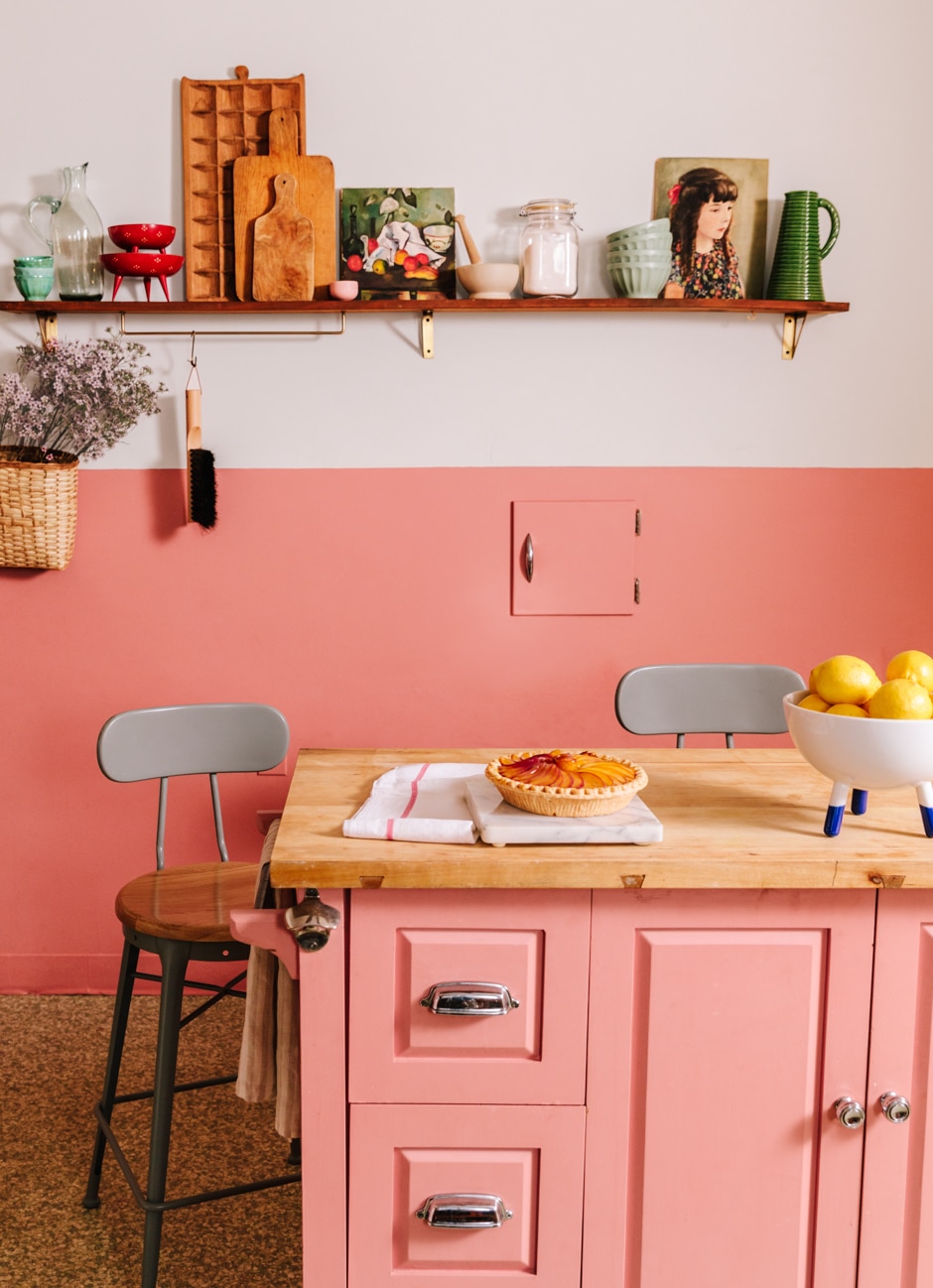A Colorful Chicago Reno
A Chicago-area couple nabbed an 1896 Victorian and, adding a lot of charm and tons of cheerful color, made it a great place for friends to gather.

Angela Wator and Jeramy Webb weren’t in a rush to move homes the day they simultaneously sent each other a listing for an 1896 Victorian in Oak Park, just outside of Chicago. But once they saw it, their plans changed. “We weren’t looking to buy a house. But we were ready to buy this house,” says Wator, an artist and the owner of BASH Party Goods and entertaining emporium Festive Collective, based in Chicago.

The couple had a dream list of must-haves that had seemed impossible to meet in their city: a pantry, tall windows, a laundry chute (a quirk Wator had grown up with and loved), a fireplace, green space, and a commuter train station within a block. This house had them all except for a fireplace, which had been removed in 1940.
Even the provenance was kismet: The original owners were a corporate attorney in Chicago who did work in Mexico City and a local artist. “I told my husband, who is an attorney who studied in Mexico City, ‘It was built for the 1800s version of us!’ ” says Wator.

The modern couple began an old-fashioned courtship of the place, taking drives on weekends to gaze at the exterior, eventually culminating in a long love letter to the owners promising to do well by the place and including an offer. “I immediately felt the strongest connection to the house,” explains Wator. “The second the door opened, I could hear our kids running down the halls.”

In 2019, when the house was finally theirs, the couple and their two young daughters (Penny, five, and Ramona, three) moved from their two-and-a-half-bedroom apartment in the city and found themselves faced with a four-story house to decorate—and not much of a budget to do so.

“The first year we lived here, we were having dinner parties every night!”
—Angela Wator
“I wanted to make sure I didn’t rush and fill every room with fast furniture. I tried to pace myself and be very deliberate about my decisions,” says Wator. A vintage-clothing collector (her wardrobe, organized by color, has its own sunny yellow room in the front of the house), Wator has a scout’s eye, which helped as she patiently combed Facebook Marketplace, secondhand stores, and estate sales to find furniture and other decor treasures that were affordable, built to last, and full of personality.

One of the best lessons of an old house is that small upgrades can make all the difference. To fill blank wall space, Wator gathered some of her old sketches (she studied illustration at Savannah College of Art and Design) and her children’s quarantine art projects. She put them all in vintage frames she found at a local shop’s blowout sale, giving the art—and the walls—new life.

The kitchen, a room she originally wanted to overhaul, got a coat of paint, new light fixtures, and some rearranging to feel like a whole new space. “The second the room was painted I thought, I can work with this. This is actually a really good, cute kitchen!” she says.


Wator wanted to stay true to the bones of the home, and it shows. A sense of history is woven through the rooms—from the period-appropriate wallpaper and hardware to family heirlooms she’s collected over the years. To keep it from feeling like a museum, she tied in playful elements—Memphis stools sit opposite 19th-century armchairs—and paint choices.

But best of all is having all that space. “We had so many parties the first year we lived here,” Wator laughs. And while the pandemic put large gatherings on hold, it’s the future that’s most exciting for the family. “I have a huge family,” says Wator. “My mom hosts Christmas now, which is eighty-something people, and she’s not always going to want to do it. The second I saw this house, I knew that it’s the next generation’s Christmas house.”

The couple already had one party in their garden in May—their wedding. With their “something old” already taken care of, the bride decided to wear blue.
“I immediately felt the strongest connection to this house.”
—Angela Wator

By Cotton Codinha | Photographs by Lucy Hewett



